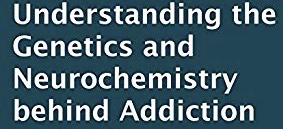Addiction 101: The Neurochemistry of Addiction
The neurochemistry of addiction can best be summed up in one sentence:
“Your brain, highjacked by drugs, shuts down, and needs rebalanced.”
Sounds simple, right? Well, let’s take a look at each section of that sentence to get the full story.
Part 1: “Your brain”
Your brain already has in it all the drugs it will ever need to feel happiness, adrenaline, sadness, pleasure and pain relief. Drugs don’t cause these feelings, neurochemicals do.
Here’s a short list of and description of some of those neurochemicals:
Dopamine- the pleasure center
Norepinephrine- your adrenaline
Serotonin- the happiness molecule
GABA- a feeling of relaxation
Endorphins- body’s natural morphine
Part 2: “Hijacked by drugs”
Hijack literally means to take over. All drugs do is mimic, hijack or manipulate these already naturally occurring neurochemicals.
Dopamine- almost all drugs work on dopamine, but most specifically drugs like cocaine and nicotine
Norepinephrine- stimulants like methamphetamine, adderrall, caffeine, etc.
Serotonin- MDMA and ecstasy
GABA- benzodiazepines and alcohol
Endorphins- opiates
In your brain, each of these neurochemicals has its own unique design and only fits and actives its own unique receptors. This is just like your car key is designed only to work on your car. However, just like when someone hijacks a car by making a counterfeit key, so can certain drugs hijack your receptors to “turn them on,” and in doing so, block the natural neurochemicals from entering as well.
Part 3: “Shuts Down”
Because the drugs mimic or artificially alter the amounts of these neurochemicals in the brain, your body begins to rely on the drug rather than producing it itself.
For example, in the case of opiates, it’s known as “hyperalgesia.” Basically this means becoming hyper sensitive to pain because one’s natural endorphins supply is in hibernation while, and acutely after, one uses opiates.
This creates an imbalance, and it is this neurochemical imbalance that is at the core of what drives physical dependency. Basically the brain is craving its natural amount of neurochemical, however, the body has stopped producing it naturally and is reliant upon only getting it artificially through illicit drugs. There in lies the cycle of addiction.
Part 4: “And needs rebalanced”
There are many ways to achieving this rebalancing. Sometimes prescriptions can act as a crutch to help. Other times, natural measures, like exercise, social, or spiritual connection is what it takes. Very often, it is a combination of both.
The amount of time it takes one to “rebalance” depends on the duration and intensity of one’s use, and, the amount of effort he or she is willing to put into their recovery efforts.
Though I realize this a short, simple and very generalized way to explain addiction, I hope that it has helped increase your understanding of the neurochemistry of addiction.
Image Source: http://blog.cord.edu/cobbersonthebrain/author/tolson23/

